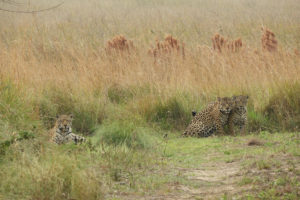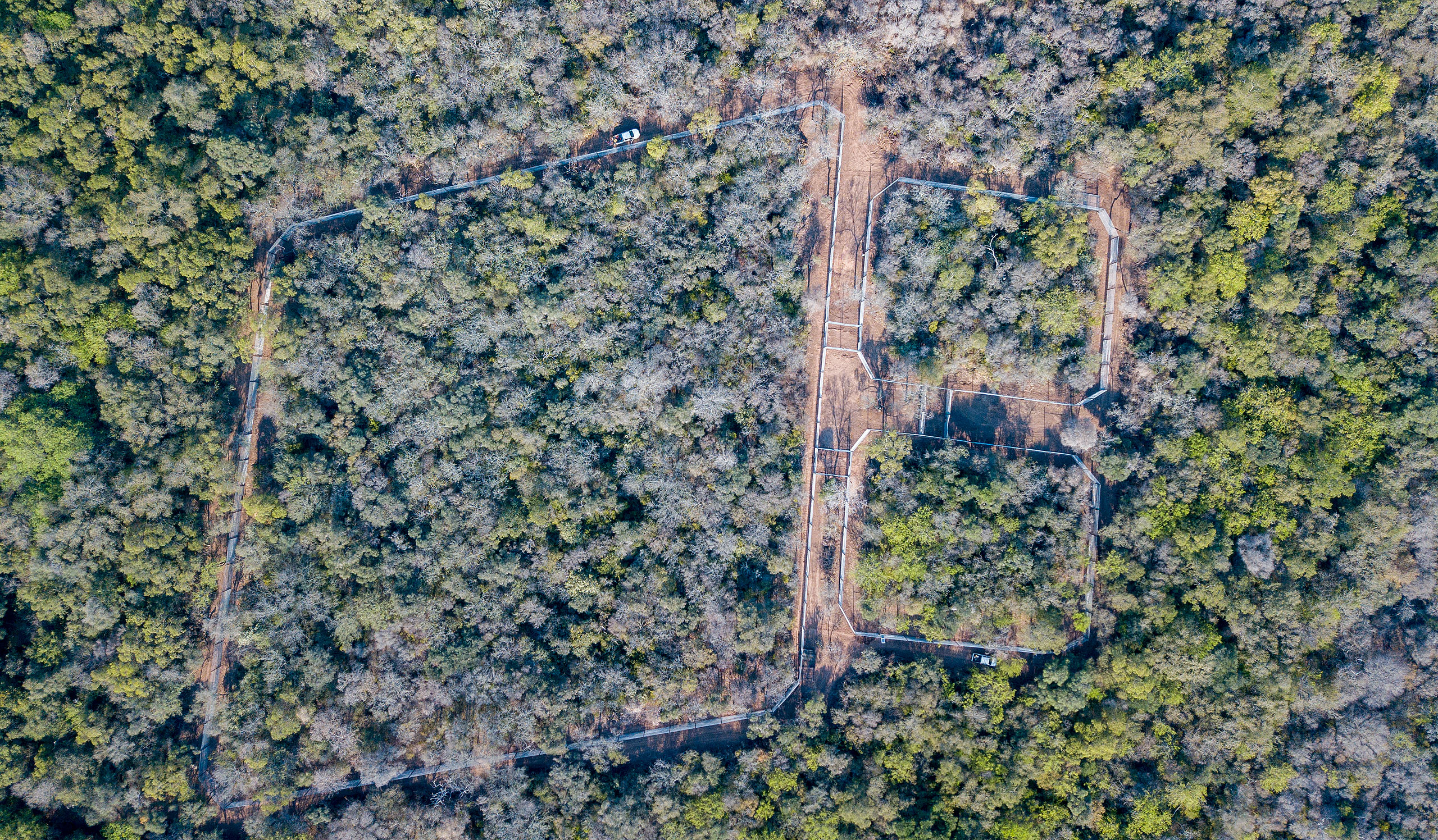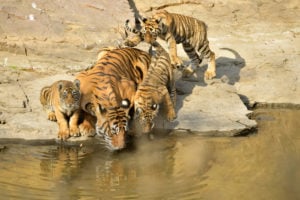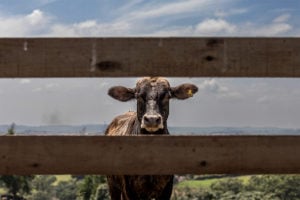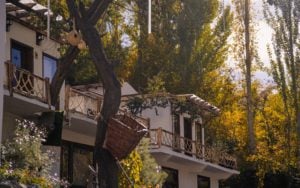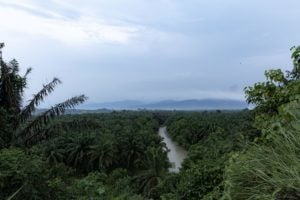“One day I went out on horseback with the technicians in charge of monitoring the animals and, suddenly, we saw Mariua, a female jaguar, returning from hunting with her two cubs. She was crossing a pasture, and when she spotted us she just stared, while the cubs ran for shelter. It is impossible not to get excited when you see them walking through Iberá.”
Pascual Pérez’s voice cracks when he remembers that fleeting encounter. Born in Mburucuyá, a small town in the north-east Argentine province of Corrientes, he is the coordinator of the Carambola gateway, one of the entry points to Iberá National Park. The national park and the adjoining Iberá Provincial Park make up the largest wetland in the country. Seventy years ago, the jaguar (Panthera onca) was declared extinct in this region, but now the species is returning.
The reintroduction began in 2015, when the first female arrived at enclosures owned by the Rewilding Argentina Foundation (FRA) on an island inside the park. After being acclimatised at the reintroduction centre, individual animals were progressively released over the following years. The population has continued to grow with more releases and cubs being born in the wild among the marshes and flooded areas – although this year, the park has suffered during a severe drought.
“Right now, there are 16 free individuals, although there might be 21, as there are females that are of maternal age, but we have not yet been able to confirm whether they have had cubs,” reports Sebastián Di Martino, FRA’s Director of Conservation. Agustín Paviolo, coordinator of Proyecto Yaguareté [Project Jaguar], which is studying how the return of the jaguar is changing the ecosystem, agrees: “The density of jaguars on the island must be the highest in the world. It won’t be long before they begin to disperse throughout the rest of the national park.”
Jaguars in Argentina
Argentina is the southernmost point in the distribution of the largest cat in the Americas. Originally, its presence extended as far south as Patagonia. “Historical records indicate that there were jaguars in the provinces of Buenos Aires, La Pampa, San Luis and throughout Córdoba,” says Verónica Quiroga, a biologist at the University of Córdoba. Today the situation is very different.
Apart from Iberá, the species is only found in three areas in the north of the country, in very different ecosystems. From east to west: the Atlantic Forest, where the population is shared between the province of Misiones and two national parks across the border in Brazil; the dry Chaco bordering Paraguay; and the southern section of the Yungas, mountain forests that extend from Bolivia. According to the government’s Department for Wild Fauna and Biodiversity Conservation, the total population does not exceed 300. Jaguars face multiple threats that differ depending on the location, which means that conservation efforts must be multiplied and diversified.
“The jaguar is for us a walking national park and our responsibility is to protect it even outside what we know as protected areas,” says Federico Granato, president of the National Parks Administration, an agency under the Ministry of Environment and Sustainable Development. The task is plagued with difficulties, despite some encouraging developments.
The latest survey carried out in the so-called “Green Corridor”, which includes Misiones and the Brazilian parks of Iguaçú and Turvo, was published in June. It suggests that the jaguar population in the area has remained stable at around 90 individuals for the last six years.
“I am not disappointed,” says Paviolo, one of the researchers in charge of the study. “It is true that, depending on the region’s carrying capacity [the number of individuals that an ecosystem can support according to the needs of a species], this figure could double, but it is clear that we have reached a point of equilibrium between human pressures, conservation areas and the productivity of the animal.”
There has been some good news in other regions too. “In the Yungas, camera traps inform us that the distribution of the species is spreading to places where it had not been recorded before,” says Granato. In the Chaco – where no more than 20 individuals survive – in the last two years the presence of three males has been confirmed for the first time in many years. But each case also has its dark side, and none of the populations are safe from new and potentially fatal setbacks.
Within Argentina, the Yungas occupy areas of the provinces of Jujuy, Salta, Tucumán and Catamarca. Jaguars could once be found in all of them, but are now only distributed over 22% of the territory, exclusively in Salta and Jujuy. Even so, it is the largest population in Argentina – between 150 and 200 individuals according to an estimate that is more than a decade old. An update is awaited, and not everyone is optimistic: “The real figure could be lower. The last two specific camera-trap studies, one in 2013 and the other in 2021, gave worryingly low densities,” says Soledad de Bustos, director of the El Pantanoso protected wildlife area, which belongs to the Biodiversity Foundation, a local NGO, and is located next to Calilegua National Park.
Verónica Quiroga is also sceptical about what is happening in the Chaco: “We continue to receive reports of tracks or sightings, but this does not mean that the jaguar population is recovering,” she says. In large part, it was the work she led some years ago that made it possible to conclude that the population was no more than 20 – “an amount that is ecologically is equivalent to extinction”, according to the specialist.
Challenges for the jaguar
Last December, the killing of a large male jaguar in Clorinda, near the border with Paraguay, made headlines across the country. The Red Jaguar Foundation managed to track down the hunter through footage uploaded to his Facebook account, although so far no sanction has been imposed.
Hunting continues to be one of the main threats to endangered species in Argentina. “In the towns and small cities of Misiones it is a weekend recreational activity that is still deeply rooted,” says Paviolo, and the situation is similar in Formosa and Chaco. “In the Yungas, the jaguar preys on cattle, which occupy practically all the space,” explains de Bustos. “So the owner of those cows goes out to kill it, even as a precautionary measure, as soon as he detects tracks in his field.”
Born and raised in Iberá, Omar Rojas lives on a cattle ranch next to San Alonso Island, where jaguars now roam freely. “If you asked my neighbouring ranchers what they thought about the return of the jaguar, they’d tell you that they would kill it,” he says. He adds that now farmers know they should inform the parks department if they see evidence of a jaguar in their fields, but also warns that “if a jaguar attacks a cow, there could be problems with the ranchers”.
The need to curb these conflicts has led to a number of jaguar conservation initiatives. Environmental education campaigns have been promoted, lights erected to dissuade the big cats from approaching livestock pens, and recorders installed to detect gunshots in hunting hotspots. A recent seven-month survey of 90 such sites, across more than 9,500 square kilometres of a green corridor straddling Misiones and Brazil, detected gunshots in 43 of them.
Tourism has also been promoted with the same objective. “The arrival of travellers discourages the presence of hunters,” says Sebastián Di Martino: “We noticed it in El Impenetrable National Park [in Chaco]. In the first year of opening the campsite, the number of visitors went from almost no visitors to 3,000, and the increase in the movement of people along the Bermejo River had the effect of reducing the number of shots detected.”
“In Baritú [National Park, Salta province], the national parks administration set up a community corral that is built in such a way that it prevents the entrance of the jaguars and allows the neighbours to group their cows there without risk,” says Granato. “We have already started to build a second corral and the idea is to add more.”
Of course, poaching is not the only threat. Car accidents are frequent, especially on the roads that cross the jaguars’ range in Misiones. There, in addition to speed control radars and warning signs, a digital patrol system (SMART) is used to facilitate the collection, storage, evaluation and automatic communication of traffic data.
Most serious of all is the issue of deforestation and habitat fragmentation. As Verónica Quiroga says: “The change in people’s perception of hunting will be of no use if the jaguars are left without forests to live in.” Jaguars, solitary and territorial animals, are great roamers. They can travel up to 40 kilometres a day and control areas ranging from 5 to 500 square kilometres without encountering competition. In the Chaco alone, the extension of the agricultural frontier towards the north of the country has devastated more than 6 million hectares of native forest since the 1990s, and although the pace has slowed, deforestation continues. Indiscriminate logging has cut off any connection between the Yungas and the Chaco, and threatens to isolate the Bolivian Yungas from their extension in Argentina, as well as the two sectors where the species is still present in the province of Salta.
“We have been working on a report on Pantanal-Chaco connectivity with people from Bolivia and Paraguay and we realise that we are running out of corridors,” warns Quiroga. “The large population centres of jaguars in Paraguay are increasingly isolated, disconnected from the Argentine Chaco and southern Bolivia. This is a key moment, and we need there to be no more deforestation because under the current conditions the jaguar will have no chance of recovering.”
Federico Granato, the president of the National Parks Administration (APN), points to fragmentation as the main problem in Misiones: “The generation of islands where only specimens of the same lineage reproduce among themselves can generate long-term genetic disorders that end up exposing the population to various diseases,” he explains. In 2021, his institution received US$60 million through an agreement with the World Bank and decided to use half of this income to strengthen biological corridors.
In spite of everything, there is room for optimism in the four areas where the jaguar survives. Pascual Pérez adds reasons to be hopeful in Iberá: “Here the jaguar does not have the threats that exist in other parts of the country. Between the national and provincial parks, there are more than 750,000 hectares with plenty of prey available and hardly any risks, because we are far from important urban centres. It is a magical place for the species to continue growing.” Agustín Paviolo also trusts in the passage of time: “Cultural changes regarding hunting will inevitably come.”
The jaguar, defined as a “national natural monument” of Argentina, lives in a critical state but is not completely lost. The next 10 years will determine the success or failure of the will to save it.
